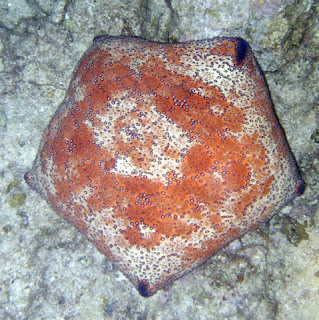Common names: Scientific Name: Location:
Tiger Shark Galeocerdo cuvier Outside reefs and sometimes inside Saipan’s lagoon
Manta Ray Manta birostris Often seen in deep waters around TIQ, SPN Lagoon
Giant Moray Gymnothorax javanicus Saipan’s Barrier Reef, Reef Patchs in Tinian and Rota
Estuarine stonefish Synanceia horrida Throughout the beaches of the CNMI
Giant trevally Caranx ignobilis Throughout the deep waters within and outside of the reefs
Pacific Double-saddle butterflyfish Chaetodon ulietensis Throughout the beaches of the CNMI
Emperor angelfish Pormacanthus imperator Throughout the beaches of the CNMI as well as the reefs
Twoband anemonefish Amphiprion bicinctus along the sea anemone on the reefs
Great Barracuda Sphyraena barracuda In and out of Lagoons, deep waters.
Bluebarred parrotfish Scarus ghobban In and around the reefs
Bluespine unicornfish Naso unicornis In, around and around reefs
Pacific Blue Tang Paracanthurus hepatus Around the reef
Forktail rabbitfish Siganus argenteus Around the reef
White-barred triggerfish Rhinecanthus aculeatus Around the reef and in the lagoon
Longhorn cowfish Lactoria cornuta Around the lagoon and reef
Solander’s sharpnose puffer Canthigaster solandri all over the reef and in lagoons
Harlequin snake eel Myrichthys colubrinus Inside of lagoons and around the reefs
Hawaiian lionfish Pterois sphex In holes of reefs
Red bass/ Red Snapper Lutjanus bohar deep waters in lagoons and outside re
Panther flounder Bothus pantherinus sandy beaches depending on their colors for camouflage






































